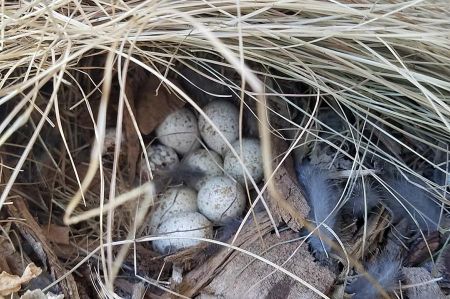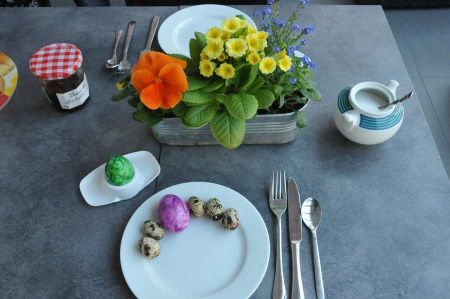Easter time – egg time - chicken and quail eggs!
- Written by Portal Editor
We arrived in the south of Germany in time for Easter, where on Good Friday we had already informed ourselves extensively about the custom in Franconia of decorating the village wells with pine greens and blown out and then hand-painted eggs.
So, it was logical that for breakfast the following morning, in addition to the freshly boiled, soft breakfast egg, there was also a hand-painted, hard-boiled egg on the breakfast plate. Next to them, however, were a few miniature eggs that could be clearly identified as quail eggs due to their natural colouring. We had heard about quail eggs several times, but we had never been served quail eggs for breakfast.
However, the taste of the quail eggs is much more intense


Further healing effects or positive effects of quail eggs in alternative medicine can be seen:
in positive effects on blood pressure
for heart and kidney problems
for stomach problems
for asthma, diabetes, neurodermatitis, migraines and digestive problems
to strengthen the immune system
for detoxification and purification
to vitalize the body
However, we were now hungry for breakfast and would rather eat the really excellent tasting quail eggs, which were lightly cracked for this purpose and then simply drained, just like the larger chicken eggs. A delicious delicacy that, as we have learned, is also very healthy.
Dyed “Easter eggs”, even far away from the tourist hotels
We were now also interested in the question of why the hard-boiled eggs are coloured at Easter, because the colouring certainly shouldn't and shouldn't change the taste. During our travels we came across dyed “Easter eggs” in many countries in the Mediterranean region, even far away from the tourist hotels. This Christian tradition is even widespread in Armenia and Russia. And almost everywhere in the above-mentioned regions, on the morning of Easter Sunday, children go in search of the brightly painted eggs that had previously been hidden in the garden.
As early as the 12th century, food was consecrated at Easter, including the blessing of eggs: “...that they may become wholesome food for your believing servants, who eat them in gratitude and in memory of the Lord's resurrection.”
The tax paid by farmers to their landlords, the so-called tithe, which was paid in the form of eggs on Maundy Thursday in the spring, also points to the great symbolic power of eggs. However, the causal reason here was probably the fasting period, which, at the same time as the hens' increased willingness to lay, led to a surplus of eggs.
Dyed eggs were mentioned in documents in Germany as early as the 13th century. There are reports from 1553 of red eggs during the Easter consecration of food. The term Easter egg first appears in records from Strasbourg in 1615.
It is a very old tradition to dye eggs colourfully and give them as gifts at Easter.
Happy Easter to all of you.
Please read as well:
George McGavin – former Oxford University entomologist
Amazonia by Yadegar Asisi – Fascination of tropical rainforest
-
-
-
-
-
-
-
-
-
https://www.alaturka.info/en/life/culinary/6513-easter-time-egg-time-chicken-and-quail-eggs/amp#sigProIdd2044dd642
